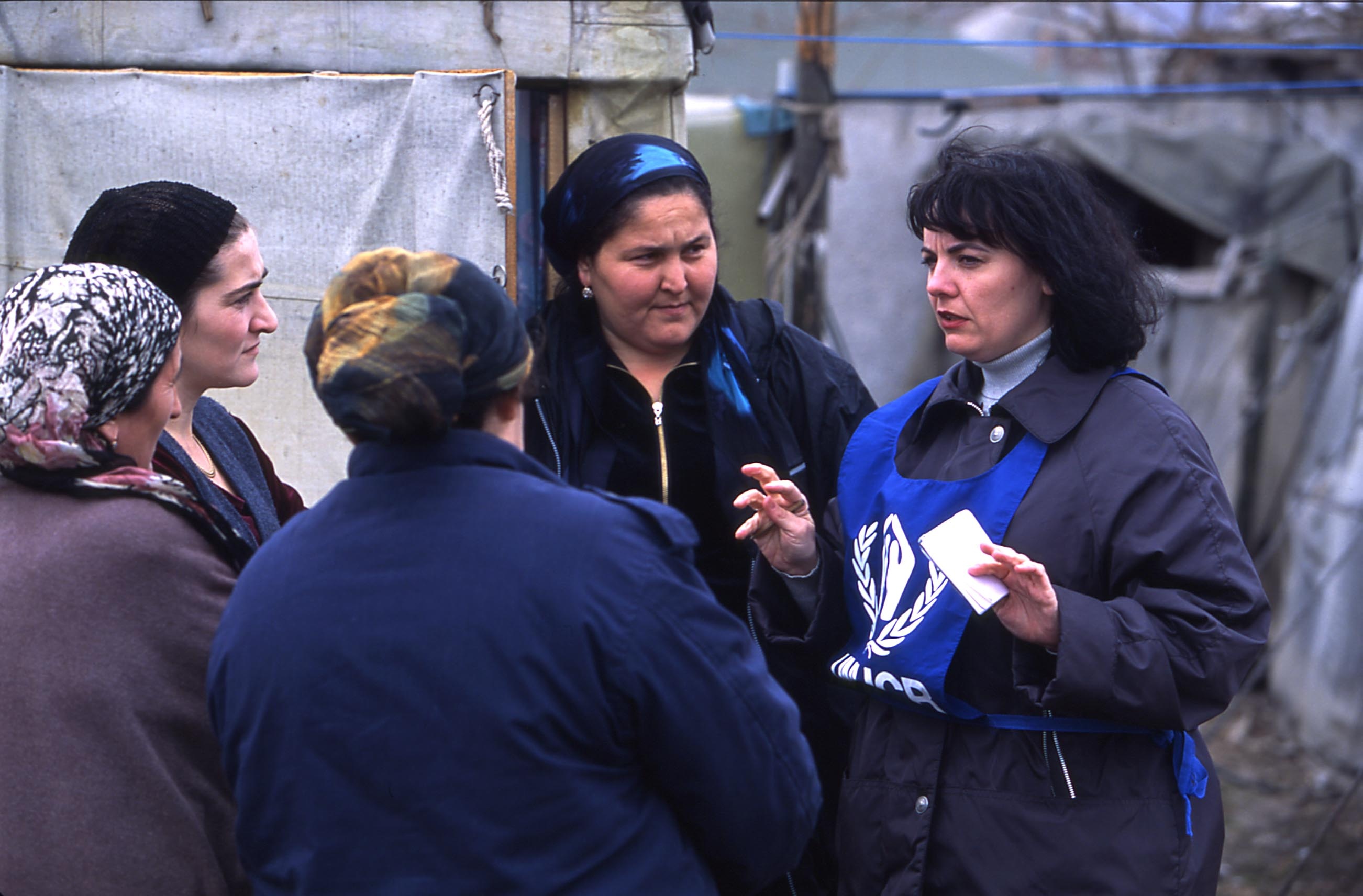Lesson plans for ages 15-18 in Geography: Internally Displaced People
Lesson plans for ages 15-18 in Geography: Internally Displaced People
-

A UNHCR protection officer speaks with displaced Chechens living in tented camp A or 'Alina' camp, in Sunzhenski district. UNHCR supports on-site counsellors who help IDPs obtain legal documentation and resolve problems such as access to basic health care and social rights and allowances. Tented camp A was closed in December, 2003. Its approximately 900 remaining residents were given the option to return to Chechnya or relocate to Satsita camp or temporary settlements in Ingushetia.
LESSONS 1 and 2: Who are internally displaced persons? Where are they concentrated?
Preparation
Run off copies of the map "The World's Internally Displaced People" [PDF, 170Kb].
Have a large map of the world set up at the front of the classroom.
Procedure
Introduction
Begin the lesson by asking the students the following questions:
-
What is the name of a line which separates one country from another?
A border or a frontier - During times of persecution or violent conflict, people often cross a border and enter a neighbouring country in their search for safety and shelter. What are these people called?
Refugees
Use this opportunity to reinforce the students' understanding of the term refugee, a person who "owing to a well-founded fear of being persecuted for reasons of race, religion, nationality, membership of a particular social group, or political opinion, is outside the country of his nationality, and is unable to or, unwilling to avail himself of the protection of that country." (The 1951 Convention relating to the Status of Refugees).
-
Hundreds of thousands of people flee their homes to escape persecution and war, but for various reasons, they do not cross international borders. What are some of the reasons why these people stay within their own countries?
Perhaps the closes border is too far away, or the journey to the border is too dangerous because of physical barriers such as a desert or a mountain range. Or perhaps there are battle zones in the way, or they are simply too old to travel or too poor and cannot afford the journey. These are people who have been forced by violent circumstances to abandon their homes, who have been displaced, but who are still within the borders of their own country. They are called internally displaced persons, IDPs for short.
Map work
Hand out copies of "The World's Internally Displaced People" [PDF, 170Kb].
Ask the students to read aloud the brief descriptions of circumstances in several of the countries on the map. Perhaps a student is familiar with the circumstances in one or other country through personal or family experience, or through reading or viewing a television programme.
Use the descriptions on the map as a starting point for discussion about the root causes of displacement. Are there similar causes present in almost every case? If so, what are they?


